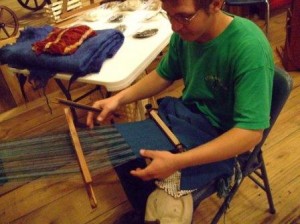
Pole barns or sheds are simple structures ideal for agricultural purposes, but can be useful on rural homesteads and even suburban lots. These simple structures are perfect for firewood storage, housing tools and machinery, or even shelter for livestock. One only needs basic skills, as well as lumber and some tools, to build one. Materials are inexpensive and can be adjusted to any size needed.
The exact amount of materials needed will depend on the desired size of your shed.
You will need:
- lumber
- digging equipment
- gravel and concrete
- poles
- roof trusses
- tin roofing sections
- straight nails
- roofing nails
- hammer
- saw
- Choose your location and sketch it out. Start by picking a location that is level and not prone to flooding. A flat spot at the bottom of a hill would not be a good choice due to rain runoff. A detailed sketch will help you visualize your shed and to see if there are any changes that should be made before proceeding. You don’t have to be an artist to accomplish this; a simple line drawing will work.
2. Legalize it. Make sure you check your local building codes before you start anything.You will need a building permit to get started on your project.
3. Dig holes and set your posts. Begin by digging holes for your posts. Your can use a hand-held post hole digger or an auger. Make sure your holes are larger than your posts. Place a 1-to-2-inch gravel base on the bottom of the hole and set your post. This will help with drainage. Fill your hole with concrete to reinforce the pole. This will also help keep the post from being exposed to moisture in the ground and from freezing if you have cold winters. Brace the poles upright until the concrete sets. Use some scrap 2-by-4 lumber to form your braces. It can be as simple as slightly nailing one end to the post at an angle, with the other end against the ground.
4. Build and install the roof trusses. The size and rise of your trusses depends on the size of your shed. Your rise is however many inches your roof rises per one foot of length. Attach the tin to the roof using screw-in roofing nails. Make sure to overlap the sections to prevent leaks. Use a ridge cap at the peak of the roof to cover the ends of the tin pieces.
Remember that pole sheds or barns should be constructed on relatively dry land for greater stability. Use an all-weather insulator to ensure added protection in the barn. Use care when working with lumber and such tools as power drills or saws. Do not dig a basement under your shed. It can compromise the stability of your foundation.

Originally posted in June 2010.































